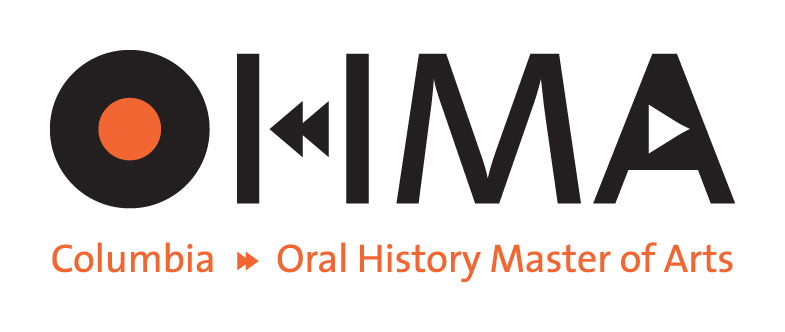OHMA student Tomoko Kubota reflects on Nyssa Chow’s contribution to the Spring Workshop Series, "Writing and Listening for the Intersubjective Encounter."
Close your eyes. (This may not be the best way to start for readers)
Pay attention to your ears.
Listen to the sounds outside of the room.
What do you hear?
You may hear the sound of cars. You may hear the sound of people walking.
Now, try to listen to the sound in the room.
What do you hear?
You may hear the sound of the refrigerator. You may hear the sound of the clock.
This is my favorite way to start my yoga. Through this practice, I realize how ignorant and unaware I usually am of the sounds around me. But with this approach and these questions, each sound starts greeting me—"Hey, I am here"—and my heart starts whispering back in accordance with the sound. For instance, a ticking clock becomes an active figure in my mind and evokes the memory of, say, the morning I woke up late, screamed, and rushed to school. The sound of the wind reminds me of how colorful the autumn leaves were when I walked Central Park. In many ways, the effect of sound is quite magical.
In her multimedia book project Still.Life. - Intersecting Histories., Nyssa Chow instinctively and meticulously uses the effect of sound. At first, I felt a bit lost in reading her story, since I did not know much about Trinidad and its history. I come from Japan, where the society is considered to be very homogeneous and issues of race, skin color, and social injustice are not sufficiently discussed or recognized; as a result, I did not have a common frame that could mediate her personal and historical narrative with my own experience. But then the sounds changed everything.
Nyssa centers sound in her work through multimedia presentations. As I was listening, first the sound and then the narrative suddenly jumped into my memory, and my heart whispered, "Oh, I know this"—a connection that otherwise would have evaded my life and experience. The sound of birds, leaves shaken by the wind, and barking dogs helps me visualize "my" Trinidad, resonating with the memories the sound evokes for me.
The sound enables me to not only travel to place, but to time. My favorite sound in Nyssa's work was "Poole, Trinidad, in 1929," where she created the sounds of a past she did not personally experience. When asked how she did it, her answer was inspiring: "There are things that have not changed. The frogs [in the recording] are in my Mom's yard because they are the same frogs I grew up with. They would never go away." It was an amusing remark, and we laughed, but at the same time, I thought this illustrated a very important lesson.
The frogs, something tangible and relatable for most of us, symbolize the continuity of the past to the present. We learn the past does not exist apart from us; it is there in such unexpected places as the frogs in the yard. It is critical, therefore, to find such continuities, especially when we deal with an event in the past that feels distant or out of touch for us. It is the imaginable, in many cases, which can mediate between the unimaginable and us. If we as interviewers wish to help people connect with the experiences of our narrators, I believe that it is essential to complement narrators' words with appropriate and imaginative non-verbal effects.
With that said, some might argue that these effects are artistic representations, and could violate the limits of what narrators have said in interviews. I do agree that we have to use non-narrative elements such as sound, light, and smell with moderation, but it seems to me that in our intersubjective work the boundary between the truth and the representation can be blurred. As Nyssa relates, " The truth is, we never tell the truth. It is always the filtered truth of your own point of view. You hope that they give you the permission to let other people see them the way you saw them."
Nyssa emphasizes that her goal is not to be perfectly accurate, but "to evoke and induce relationships, and invite remembering." I find it very profound, and a way of connecting with a deeper purpose in our work. Her focus on communicating relationships and remembering through sound, smell and light as well as words demonstrates her passion and respect to narrators; this, I believe, can be a lodestar for all of us.
Tomoko Kubota comes to OHMA with a BA in Foreign Studies from Tokyo University of Foreign Studies, Japan. She worked as a TV reporter at TBS, Tokyo Broadcasting Systems. Tomoko’s work explores oral history about War memories and how one can preserve and transmit memories of catastrophic events to future generations to prevent any reoccurrence.

